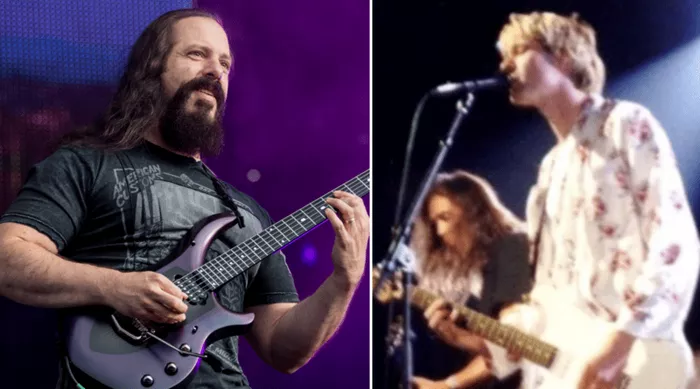Maybe It’d Be Worse if All the Bands Were Prog Metal
Dream Theater, a progressive metal juggernaut, has left an indelible mark on the world of rock and metal music. Led by the virtuosic guitarist John Petrucci, the band has consistently pushed the boundaries of musical complexity and technical prowess. However, like many bands of their era, Dream Theater also felt the seismic impact of the grunge revolution that took the 1990s by storm. In this article, we explore how the grunge movement affected Dream Theater’s trajectory and the insights shared by John Petrucci on the dynamic between grunge and progressive metal.
1. The Rise of Grunge: A Paradigm Shift in Music
1.1 Grunge’s Cultural Phenomenon
The grunge movement emerged from the Pacific Northwest in the late 1980s and early 1990s, spearheaded by bands like Nirvana, Pearl Jam, and Soundgarden. Characterized by its raw and introspective sound, grunge resonated with a generation disillusioned by the excesses of the glam metal era.
1.2 The Impact on Music Industry
Grunge’s mainstream success disrupted the music industry, reshaping the rock and metal landscape. Suddenly, the polished and intricate compositions of progressive metal faced fierce competition from the stripped-down, emotionally charged music of grunge bands. This marked a critical moment in Dream Theater’s journey as they navigated through an evolving musical landscape.
2. Dream Theater’s Response to Grunge
2.1 Shifting Tides: “Awake” and “Falling into Infinity”
During the grunge era, Dream Theater released two albums that showcased a shift in their musical approach. “Awake” (1994) and “Falling into Infinity” (1997) incorporated elements of alternative and post-grunge influences while still maintaining their signature progressive metal sound.
2.2 Embracing Experimentation
John Petrucci and his bandmates realized the importance of staying relevant and adaptable. They embraced experimentation, exploring different musical avenues while staying true to their technical roots. This fusion of styles allowed them to reach a broader audience without compromising their artistic integrity.
3. Grunge’s Impact on Songwriting and Themes
3.1 Simplicity in Composition
One notable aspect of grunge that influenced Dream Theater was its simplicity in songwriting. Grunge songs often featured straightforward chord progressions and memorable hooks. While Dream Theater’s compositions remained intricate, they found inspiration in incorporating more accessible elements to engage a wider audience.
3.2 Emotional Authenticity
Grunge’s raw and emotionally charged lyrics struck a chord with audiences, drawing them in with an honest portrayal of human struggles and vulnerabilities. John Petrucci recognized the importance of infusing emotional authenticity into Dream Theater’s music, crafting lyrics that resonated on a personal level.
4. The Bridge Between Genres: “Scenes from a Memory”
4.1 Concept Album Brilliance
In 1999, Dream Theater released “Metropolis Pt. 2: Scenes from a Memory,” a concept album that showcased the band’s narrative storytelling prowess. This masterpiece found a balance between progressive metal and grunge sensibilities, transcending genre boundaries.
4.2 Musical Coherence
“Scenes from a Memory” proved that blending different influences could create a cohesive and immersive musical experience. The album’s emotional depth and musical intricacy captivated listeners, earning Dream Theater critical acclaim and renewed interest.
5. The Legacy of Dream Theater and Grunge
5.1 An Enduring Legacy
Despite the grunge era’s profound impact, Dream Theater’s legacy as a progressive metal powerhouse endures. Their unwavering commitment to pushing musical boundaries and delivering captivating live performances has solidified their position as one of the most influential bands in the genre.
5.2 A Harmonious Coexistence
John Petrucci reflects on the grunge era with a sense of appreciation. He acknowledges that the contrasting musical styles of grunge and progressive metal created a harmonious coexistence that enriched the music industry. In his words, “Maybe it’d be worse if all the bands were prog metal.”
Conclusion
In the ever-evolving landscape of music, Dream Theater’s journey through the grunge era serves as a testament to their adaptability and musical dexterity. John Petrucci’s insights into the interplay between grunge and progressive metal shed light on how the two contrasting genres enriched each other, resulting in a vibrant and diverse musical tapestry. As Dream Theater continues to captivate audiences worldwide, their legacy as pioneers of progressive metal remains firmly intact, drawing inspiration from every musical chapter they’ve traversed, including the transformative era of grunge.

